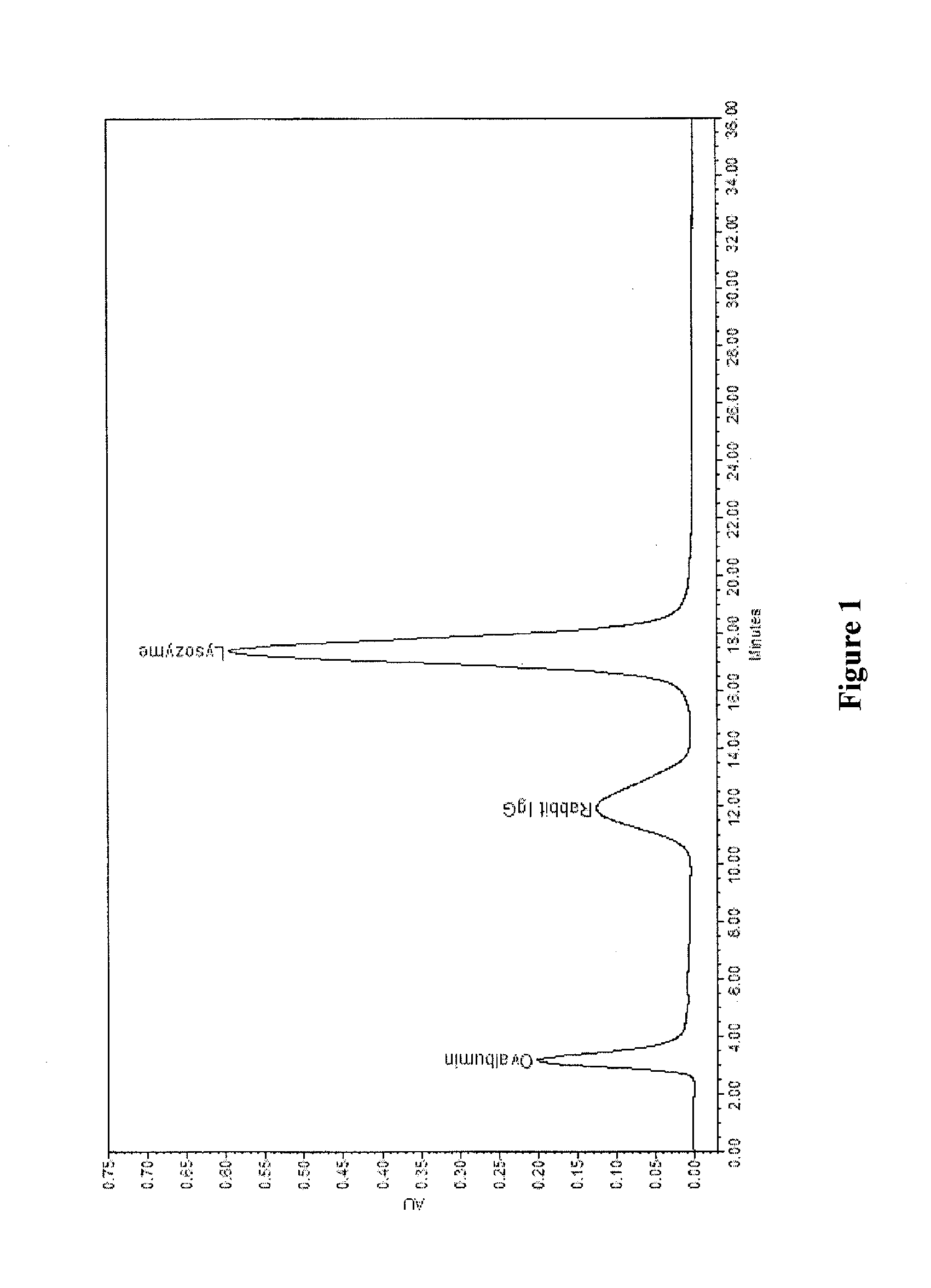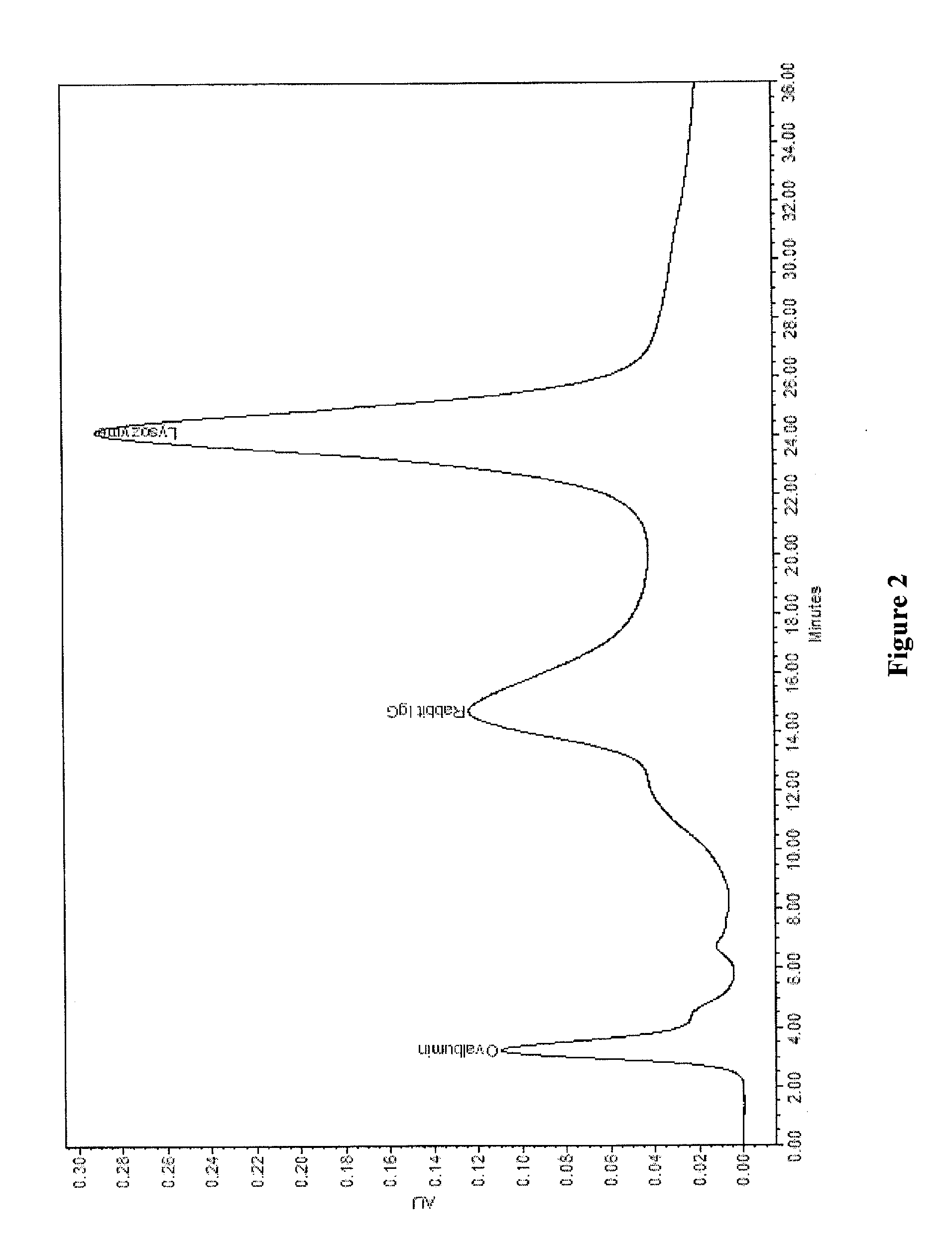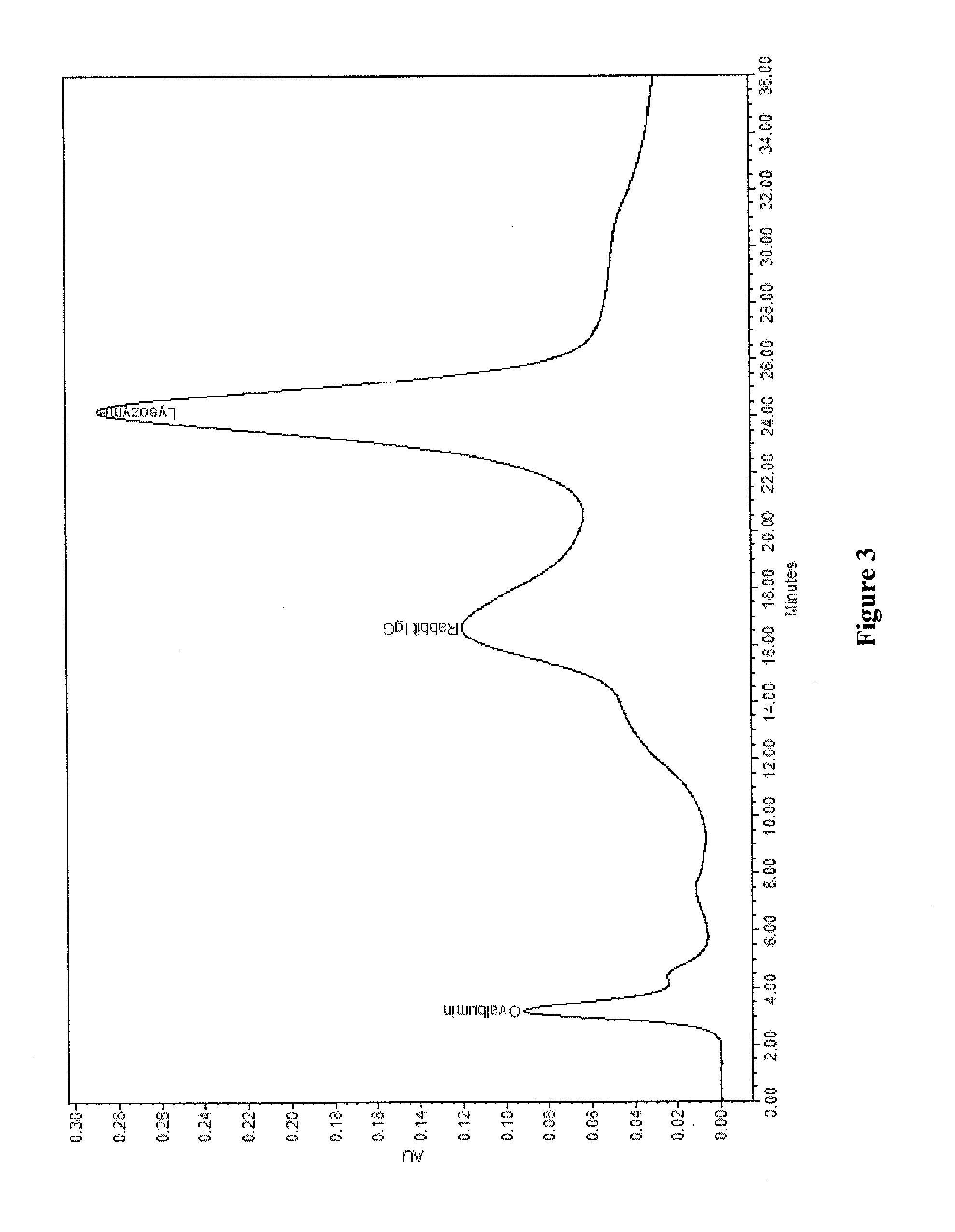Novel chromatographic media based on allylamine and its derivative for protein purification
a technology of allylamine and chromatographic media, which is applied in the field of new chromatographic media, can solve the problems of concomitant increases in downstream improvements in capacity and separation efficiency, and achieve the effect of rapid diffusion of molecules
- Summary
- Abstract
- Description
- Claims
- Application Information
AI Technical Summary
Benefits of technology
Problems solved by technology
Method used
Image
Examples
example 1
Preparation of Primary Ligand and Ion-Exchange Chromatographic Media with Polyallylamine
[0033]100 ml of 15 (w / w) % polyallylamine having molecular weight of 15,000 in aqueous solution and 300 ml deionized water were put in a 1 liter 3-neck flask equipped with a stirrer, condenser, nitrogen inlet, and temperature controller. 25 grams of polymethacrylate polymer with median particle size of 35 microns containing active epoxy group was added slowly into the reactor while stirring. The flask was then heated to 80° C. and allowed to react for 16 hours. The reaction product was washed with deionized water once, followed by washing four times with 1-methoxy-2-propanol. Elemental analysis: C, 58.3%, H, 7.3%, N, 1.1%.
[0034]The polymer from the above reaction was then transferred to a dry 1 liter 3-neck flask equipped with a stirrer, condenser, and nitrogen inlet and temperature controller. 400 ml of 1-methoxy-2-propanol and 14.5 g maleic anhydride were added to the flask under nitrogen. The ...
example 2
Separation Using Media of Example 1
[0036]The product from Example 1 was packed into a 100×7.75 mm ID column. The column was equilibrated with a 50 mM MES (2-(N-morpholino)ethanesulfonic acid) pH 5.6 buffer (Binding buffer). After equilibration, the column was injected with 100 ul of 2.0 mg / ml ovalbumin, 2.0 mg / ml rabbit IgG, 2.0 mg / ml lysozyme in binding buffer at 0.9 ml / min. The column was then eluted with a linear gradient of 0 to 100% 50 mM MES pH 5.6 buffer with 1.0 M NaCl (Elution buffer) in 26 min followed by 100% elution buffer for another 12 minutes. The result of the separation with the media of Example 1, as conducted according to Example 2, is shown in the graph of FIG. 1.
example 3
Preparation of Primary Media Through Intermolecular Polymerization
[0037]10 g allylamine was dissolved in 400 ml 1-methoxy-2-propanol and the solution was transferred to a 1 liter 3-neck flask equipped with a stirrer, condenser, nitrogen inlet and temperature controller. 25 g polymethacrylate polymer with median particle size of 35 micron containing active epoxy group was added slowly into the reactor. The flask was then heated to 80° C. and allowed to react for 16 hours. The reaction product was washed with deionized water followed by four subsequent washes with alcohol.
[0038]The polymer grafted with allylamine from above reaction was then transferred to a dry 1 liter 3-neck flask equipped with a stirrer, condenser, and nitrogen inlet and temperature controller. To the flask, 400 ml ethanol, which was previously purged by nitrogen, was added. The flask was heated to 80° C. and added with 0.6 g AIBN, and then through syringe pump, 15 g allylamine was added at a flow rate of 0.2 ml / mi...
PUM
| Property | Measurement | Unit |
|---|---|---|
| diameter | aaaaa | aaaaa |
| temperature | aaaaa | aaaaa |
| median particle size | aaaaa | aaaaa |
Abstract
Description
Claims
Application Information
 Login to View More
Login to View More - R&D
- Intellectual Property
- Life Sciences
- Materials
- Tech Scout
- Unparalleled Data Quality
- Higher Quality Content
- 60% Fewer Hallucinations
Browse by: Latest US Patents, China's latest patents, Technical Efficacy Thesaurus, Application Domain, Technology Topic, Popular Technical Reports.
© 2025 PatSnap. All rights reserved.Legal|Privacy policy|Modern Slavery Act Transparency Statement|Sitemap|About US| Contact US: help@patsnap.com



